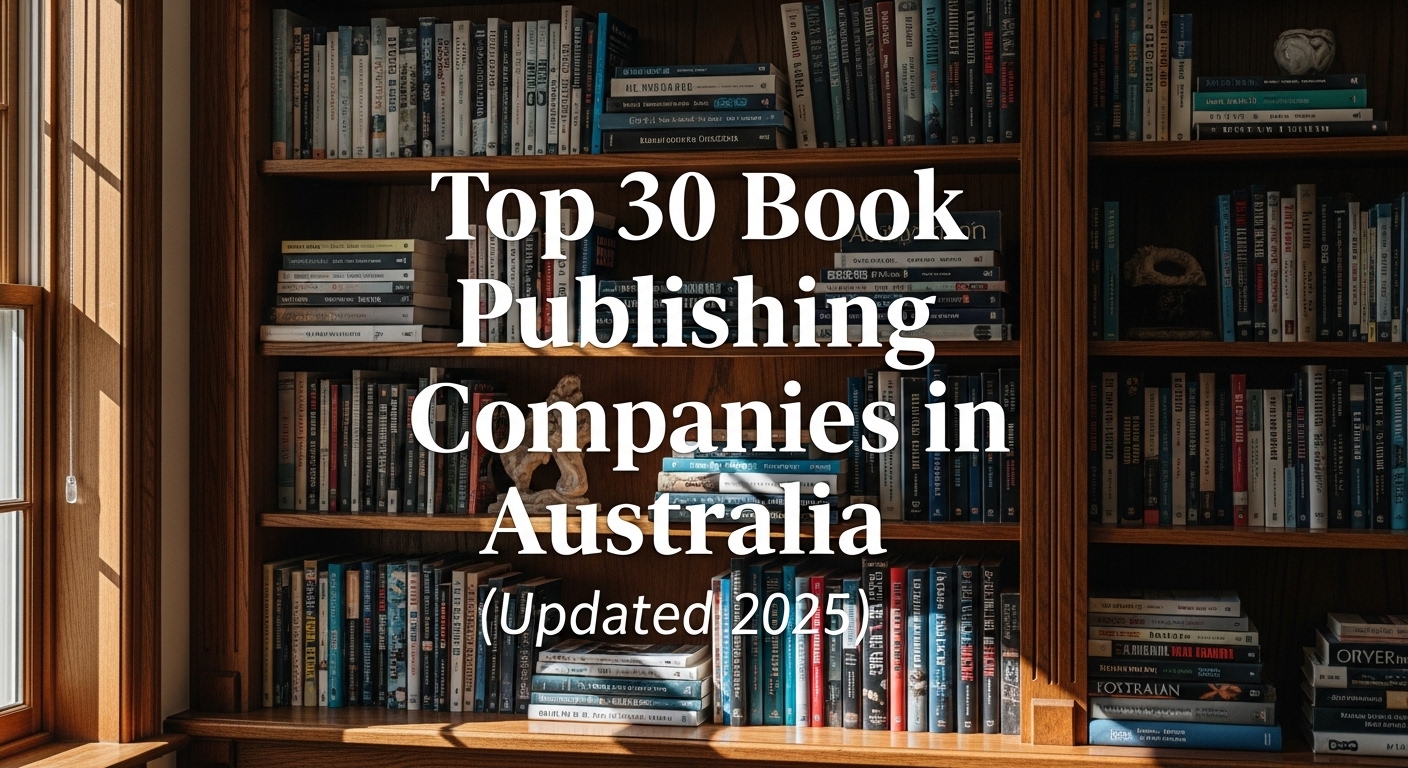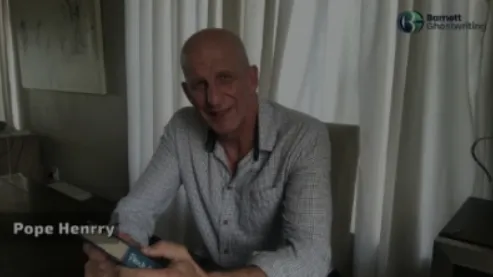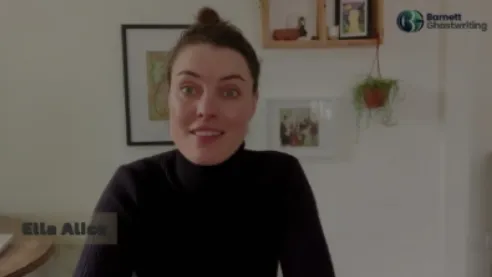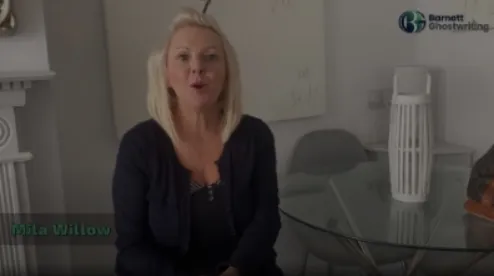
Australia’s book publishing industry in 2025 is thriving, offering a diverse mix of major trade houses, respected independents, and innovative hybrid publishers. Whether you’re a debut novelist, a non-fiction author, or a children’s book creator, finding the right publishing partner can shape the success of your work. This guide explores the top 30 book publishing companies in Australia, from industry giants to niche specialists, along with tips on how to choose the best fit, the benefits of established publishers, and a cost comparison to help you plan your publishing journey effectively.
1. Barnett Ghostwriting – Full-Service Publishing Partner
Barnett Ghostwriting is a leading Australian service for authors who want expert guidance from idea to finished book. They combine ghostwriting, editing, and publishing under one roof, making the process smooth and professional.
Services include:
- Ghostwriting across fiction, memoir, business, and children’s books
- Professional editing and proofreading
- Custom cover design and interior formatting
- ISBN registration and distribution (print & digital)
- Marketing support, including launch campaigns and media outreach
With flexible hybrid publishing options, Barnett lets authors keep creative control while ensuring high production quality and strong market presence.
2. Penguin Random House Australia
The biggest player in Australia’s market, PRH publishes bestseller lists across genres and invests heavily in audio and distribution. In 2025 PRH was named Publisher of the Year at the Australian Book Industry Awards.
3. Hachette Australia
Part of Hachette Livre, Hachette Australia publishes broad commercial fiction, non-fiction and children’s lists and provides strong international distribution.
4. HarperCollins Australia
A major trade publisher with strong backlist and bestseller marketing capabilities, widely distributed through Australian retail channels.
5. Allen & Unwin
Australia’s largest independent publisher known for literary and trade lists, long-standing commitment to Australian authors and strong rights-sales activity.
6. Pan Macmillan Australia
A full-spectrum trade publisher publishing commercial and literary fiction, children’s books and strong lifestyle/non-fiction lists.
7. Simon & Schuster Australia
Active across fiction and non-fiction with a notable presence in memoir, narrative non-fiction and celebrity authors.
8. Scholastic Australia
Leader in children’s and YA publishing in Australia, with deep links to schools and education markets.
9. Bloomsbury Australia
Runs Australian editions and local acquisitions for a global brand, with strong literary and children’s lists.
10. Text Publishing
A highly respected independent literary publisher (recently subject to industry discussion following acquisition interest in 2025), known for high-quality fiction and non-fiction.
11. Scribe Publications
Independent non-fiction and literary publisher with a focus on in-depth reportage and essays.
12. Black Inc.
Publisher of influential non-fiction and the quarterly ‘New Statesman’-style titles with strong political and cultural voices.
13. University of Queensland Press (UQP)
Award-winning small press with a strong backlist and excellence in literary fiction and poetry; named Small Publisher of the Year at recent industry awards.
14. Affirm Press
Independent trade house with a varied popular list — lifestyle, memoir, fiction and children’s.
15. Text/PRH imprints (local imprints continued)
After recent industry consolidation, several well-regarded imprints continue to operate regionally even under larger houses, keeping editorial taste local.
16. Ventura Press
Independent trade press focusing on commercial fiction and accessible non-fiction.
17. UWA Publishing / University presses
University presses (e.g., UWA, Monash University Publishing) publish strong academic and regional trade titles and are good homes for research-driven trade books.
18. Transit Lounge
Independent Melbourne-based publisher known for distinctive literary fiction and non-fiction lists.
19. Echo Publishing Group (and boutique houses)
A collection of smaller boutiques producing targeted lists in niche genres — worth approaching if your book is specialist.
20. Island (text/indie press equivalents)
Independent literary presses focused on curated, high-quality lists with strong editorial support.
21. Milieu Publishing / Magazine-affiliated book publishers
Hybrid houses that leverage magazine audiences for non-fiction and lifestyle books.
22. Pier 9/Small-run micro-presses
Specialist micro-presses that are ideal for poetry, short-run memoirs, and art books.
23. Hybrid & Assisted Self-Publishing Services (Australian-based)
Several reputable hybrid presses offer editorial, design and distribution packages for authors who want a middle ground between self-publishing and traditional publishing.
24. Specialty Academic and Professional Presses
Good for textbooks, professional titles and technical non-fiction; often operate through university channels and professional associations.
25. Independent Children’s and YA Specialists
Several Australian boutiques focus purely on children’s picture books, YA and education markets — ideal if that’s your target.
26. Black Inc. Media Imprints
Focused on political and cultural non-fiction with strong authorship and media tie-ins.
27. Small Literary Houses (state-based)
Each state has trusted small houses that nurture first-time authors and creative projects.
28. Distribution & Print-on-Demand Firms
Vital partners for smaller publishers and self-publishing authors to get books into stores and libraries.
29. Audio-first & Podcast-to-book Producers
Companies specializing in turning audio content into book packages or vice versa — useful now that audio continues to grow.
30. Independent Poetry & Short-form Presses
If your work is poetic or flash fiction, these presses are the cultural lifeblood of Australia’s literary ecosystem.
The Australian Publishing Landscape in 2025 — quick take
2025 saw continued consolidation at the top (with major houses acquiring well-known independents), a heavy focus on audio and rights sales, and renewed public conversation around how to protect independent cultural production. This means both opportunities and risks for authors: big houses bring reach and marketing power, while independents often provide more editorial care and stronger support for culturally specific stories.
Steps to Find the Best Publisher for Your Book
- Identify Your Genre & Target Readers – Match your manuscript to publishers who actively acquire in that category.
- Study Their Recent Titles – Review books they’ve released in the past 12–24 months to check for alignment.
- Assess Distribution Goals – Decide if you want bookstore presence, overseas rights sales, or a digital-first strategy.
- Check Editorial Approach – Smaller presses often give more personal editorial attention, while big houses provide broader reach.
- Follow Submission Rules Exactly – Some publishers accept unsolicited work, others require agent representation.
- Understand the Contract – Look at advances, royalties, rights reversion, audio rights, and subsidiary rights before signing.
Advantages of Working with a Well-Established Publisher
- Top-Tier Production Quality – Professional editing, cover design, and interior formatting.
- Wider Distribution Access – Get your book into bookstores, libraries, and online retailers.
- Stronger Marketing Resources – Benefit from press campaigns, sales teams, and bigger advances.
- International Rights Opportunities – Reach foreign markets through translation and rights sales.
When to consider a smaller independent or hybrid press
- Your book is highly niche or experimental.
- You want closer editorial collaboration.
- You prioritize creative control and a publisher that knows your community.
- You’re prepared to pursue a smaller advance but retain stronger long-term rights control.
Cost comparison: Traditional vs Hybrid vs Self-Publishing
| Route | Typical Author Upfront Cost (AUD) | Typical Timeline | What you get |
| Traditional (Big/Indie press) | $0 (author typically pays nothing) | 12–24+ months to publication | Editorial, production, distribution, marketing; royalties; possible advance |
| Hybrid / Assisted Publishing | $3,000 – $20,000+ | 6–12 months | Package of editorial, design, ISBN, limited distribution; author pays for services, higher royalties |
| Self-Publishing (Professional) | $500 – $8,000 | 1–6 months | Full creative control; author arranges/edit/designs/markets; pay-as-you-go services |
| DIY Self-Publishing (minimal spend) | $0 – $500 | weeks–months | Minimal professional input; high effort for formatting, cover, and marketing |
Notes: Figures are indicative ranges for 2025 Australian market conditions — exact costs vary by provider, level of editing, design complexity, and distribution choices.
Quick checklist before you sign a contract
- Who owns the rights (territory, format, audio)?
- What are the royalty rates and advance schedule?
- Rights reversion clauses — when can rights come back to you?
- Marketing commitments — does the publisher commit to a marketing spend or campaign?
- Termination and long-term obligations.
Final tips for authors
- Build a short, professional proposal: synopsis, market, comparable titles, author bio and platform.
- Consider hiring an independent editor before submission — it raises the standard of your package.
- Attend local industry events and pitch sessions (many are run by state writers’ centres and industry associations).
- If you plan to self-publish or use hybrid services, get written samples of cover and interior work and check references from prior authors.
Conclusion
Australia’s publishing industry in 2025 remains dynamic: a few big houses dominate distribution while a flourishing independent sector preserves literary diversity. Your best route depends on the book’s aims: reach and scale (large trade houses), deep editorial partnership (indies), or complete control and speed (self-publishing/hybrid). Use the list above as a starting point, do targeted research for your genre, and prepare a polished submission or proposal — that will always increase your chances of landing the right home for your work.





